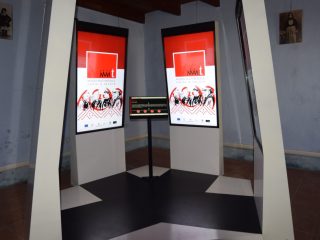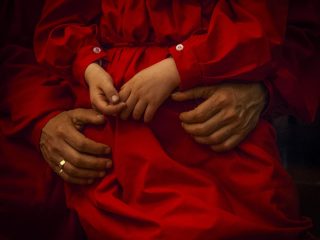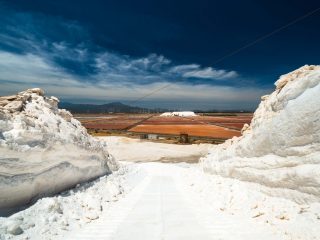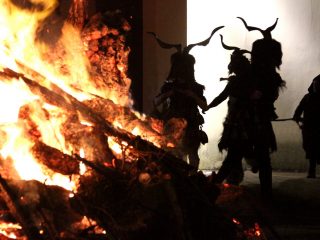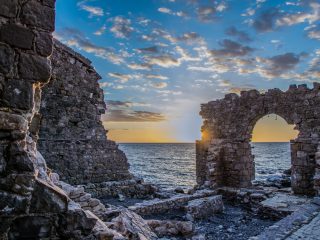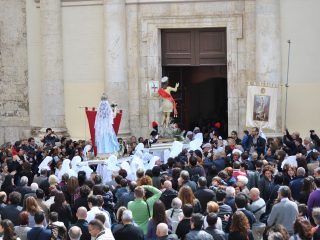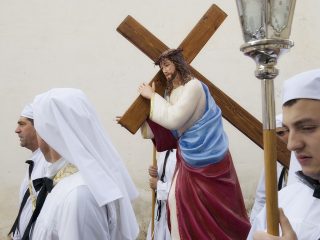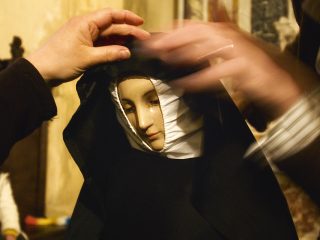Iglesias, as with many places in Sardinia, still bears the signs of Spanish domination, starting with the name “iglesia” (church). Undoubtedly, the city’s most important tradition is also Spanish, the Settimana Santa (Seville’s Holy Week being the first one to come to mind).
The Misteri procession is held on Tuesday with seven wooden simulacra which represent seven stages of the Passion of Christ. The procession is led by the brothers of the Confraternity of the Vergine della Pietà del Santo Monte, responsible for organising the Settimana Santa in Iglesias. They are known as Germani (from the Spanish word “hermanos”, brothers), and they wear white robes, a hood covering their face and black velvet gloves. The simulacra are carried by “baballottis”, representing the ancient Medieval disciplinanti (flogged), with a white tunic and their face covered to hide the shame of their sin.
On Wednesday, the devotees head to the church of San Michele to commemorate their departed brothers.
On Thursday, steeped in a melancholic, mystical atmosphere, the baballottis accompany the Madonna Addolorata in search of Jesus around the churches of the old town centre. The ritual is accompanied by the sound of drums and ratchets, ancient instruments with cogged wheels which are twirled around, producing an almost deafening sound.
On the Friday morning, the Monte procession is held with an uphill walk recalling Christ’s ascent of Calvary. The ritual of removing Christ from the Cross is held in the church of San Michele. The statue of Christ is laid on a stretcher and adorned by devotees. The Descenso procession begins in the evening with the sacred representation of the funeral of Christ carried on a stretcher, with a white canopy on top. This vast procession is led by the standards, followed by St. John and Mary Magdalen, impersonated by two children with gold clothing and oriental appearance, and “is Varonis”, Joseph of Arimathea and Nicodemus, wearing wide brown velvet cloaks and holding pincers and hammers in their hands. The Germani are the last ones in the procession with the simulacrum of the Addolorata.
On Saturday night, during the Easter Vigil praises of Glory are sung and the Resurrected Christ enters the cathedral, welcomed by the devotees and celebratory bells.
Two processions set off on Easter Sunday: one from the church of San Giuseppe with the simulacrum of the Madonna, the other from the cathedral with the simulacrum of the Risen Christ. The two processions follow different routes then meet up and form a single large procession (s’incontru).








